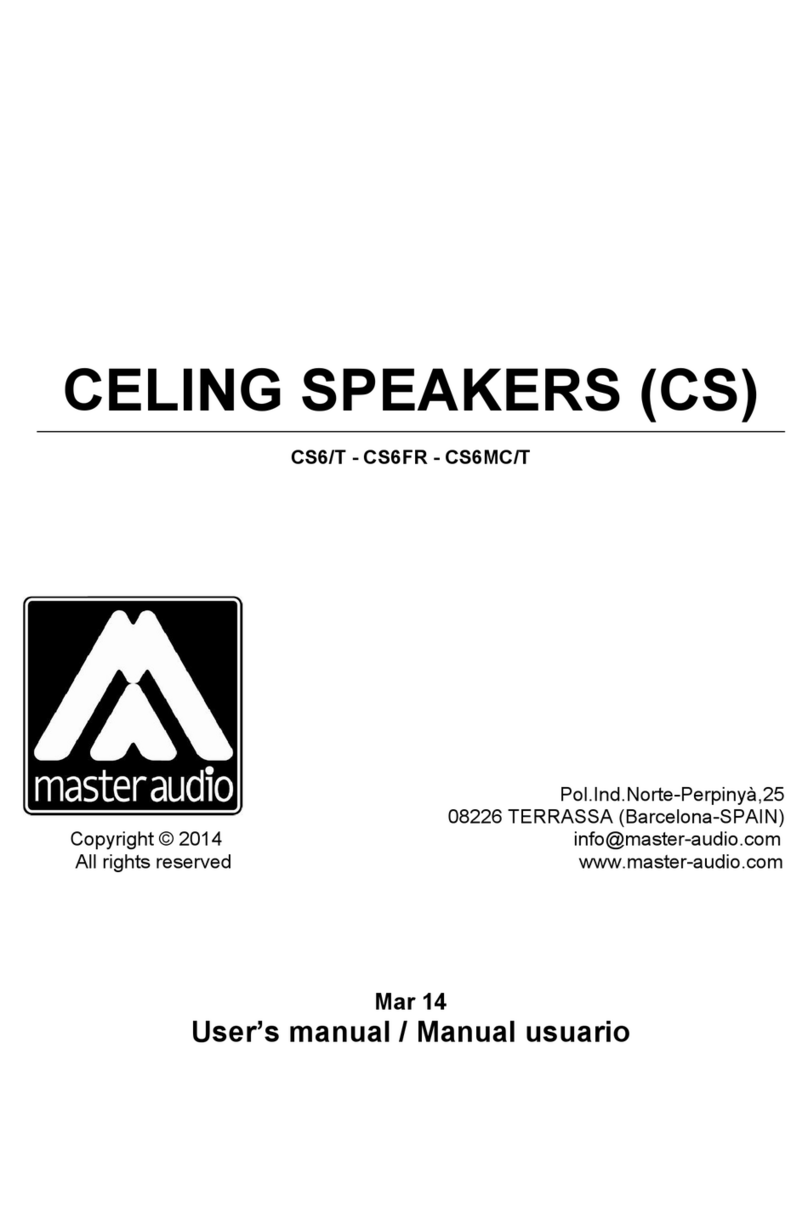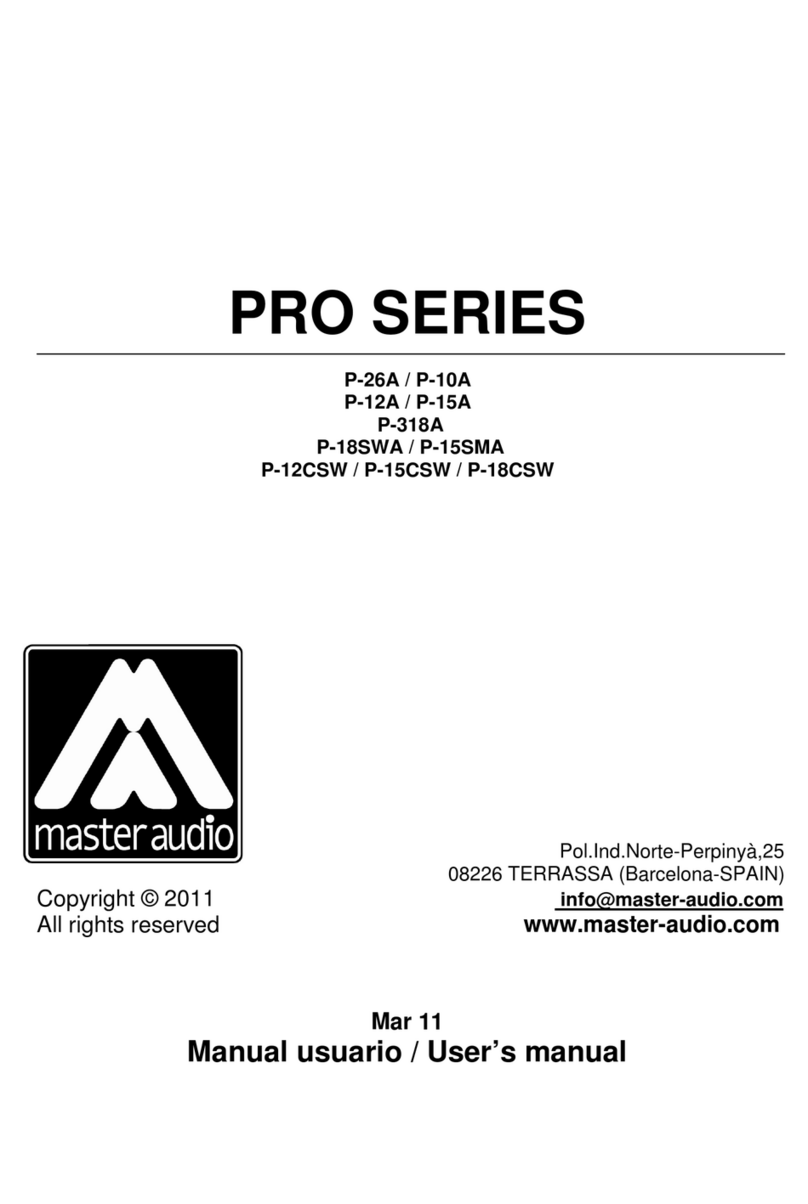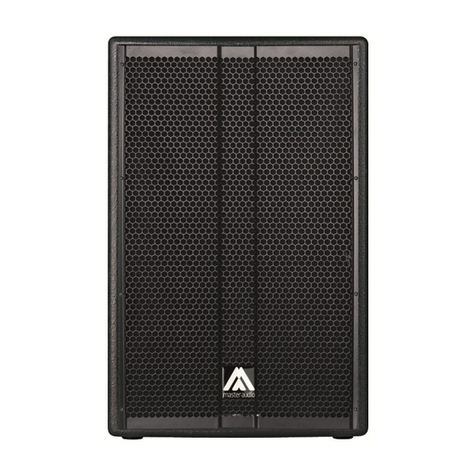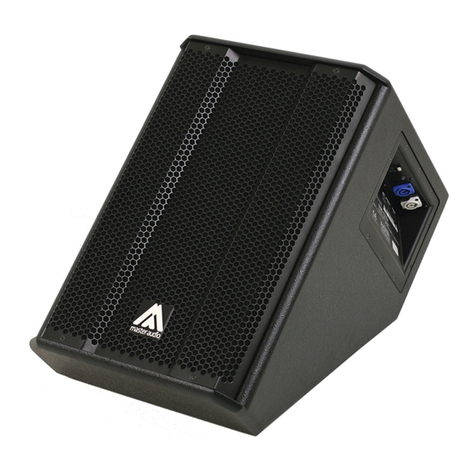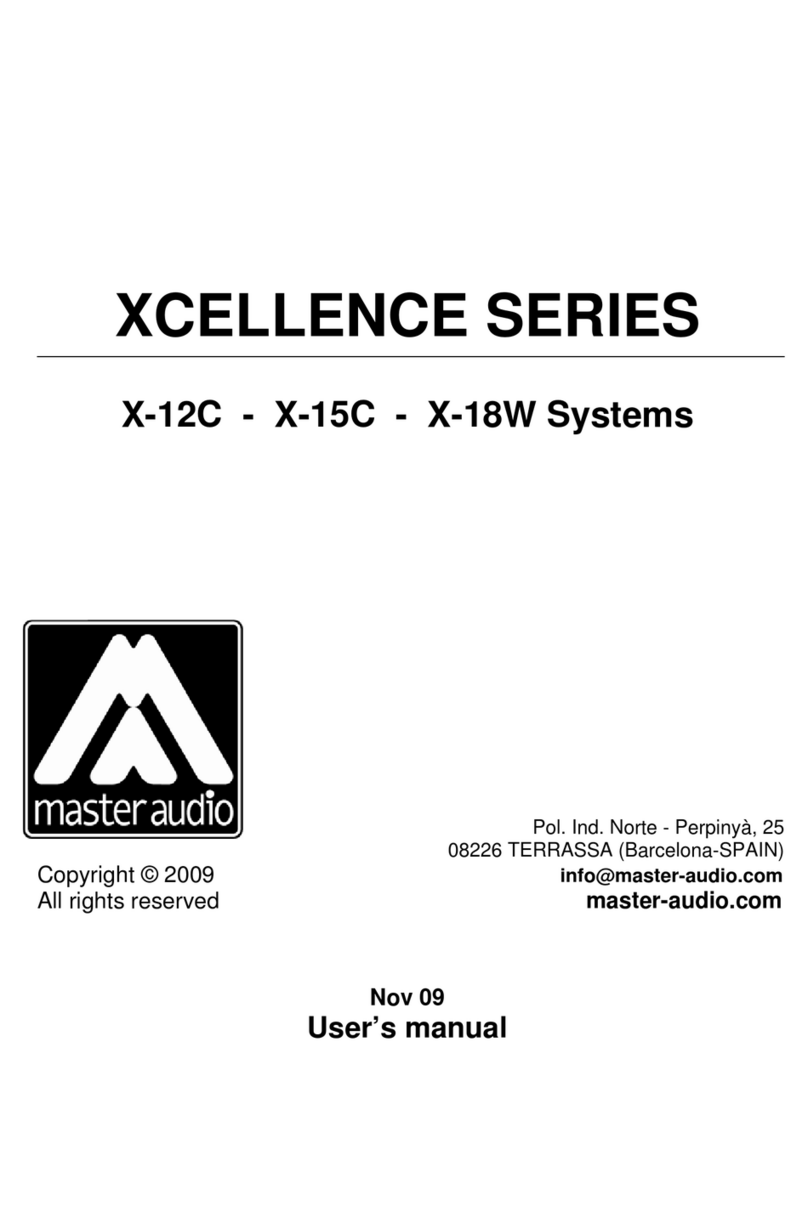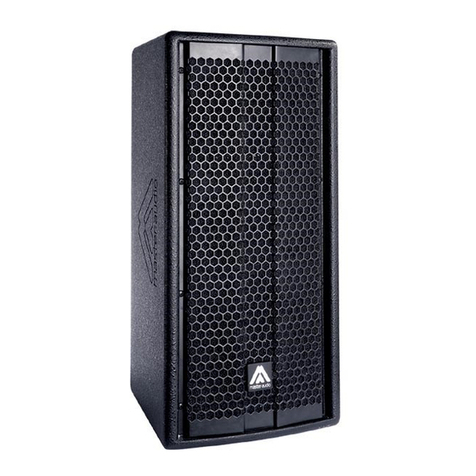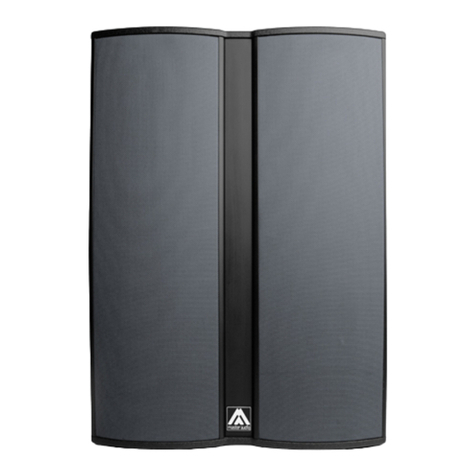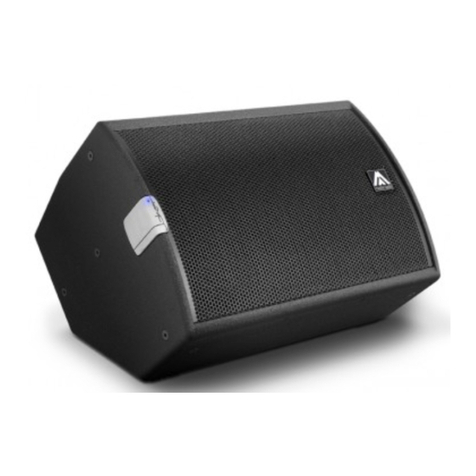Master Audio
Joker Series (Passive). Version 1.4 Jan14 9
WARNING!!! For installations that suffer from acoustic problems and in which it is
necessary to reinforce the response in the low frequencies, it is advisable to group all
the subwoofers together in the same point. By this way, cancellations will be avoided
and a higher acoustic pressure level will be obtained.
3.5. Asymmetrical and rotatable horns
The JK10, JK12 and JK15 models incorporate an asymmetrical dispersion horn which
will optimise coverage either in horizontal or vertical position.
To rotate the horn, unscrewed the frontal grille, and then, unscrewed the four fixing
screws of the horn. Rotate it 90 degrees taking care of the wires. Screw the horn
again and finally place the frontal grille in its right position.
Fig.11. Rotatable horn
Good coverage of audiences often is a conflicting combination of:
*wide coverage for the closest audience (short throw)
*narrow coverage for distant areas (long throw)
The asymmetrical dispersion horn coverage varies from "short throw" to "long throw"
along the vertical axis (keeping a constant vertical directivity). In conclusion,
directivity feature of (50º to 100º(H), 55º(V)) can be seen as if the horn itself had "two"
horizontal directivities (audience coverage), which depend on the distance. For short
distances the horn should be used with its "wide" dispersion (100º). For long
distances the horn should be used with its "narrow" dispersion (50º).
We suggest you to pay attention to the following examples.
3.5.1. Vertical-Positioned Cabinets (Flown and aiming to the audience)
We need wide coverage (100º) for the closest listeners and narrow coverage for the
distant audience.

